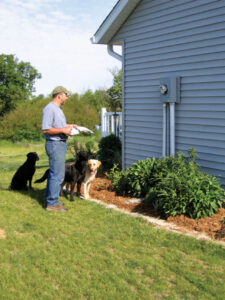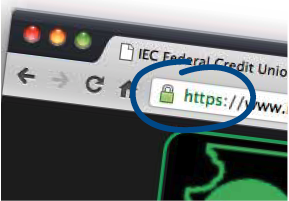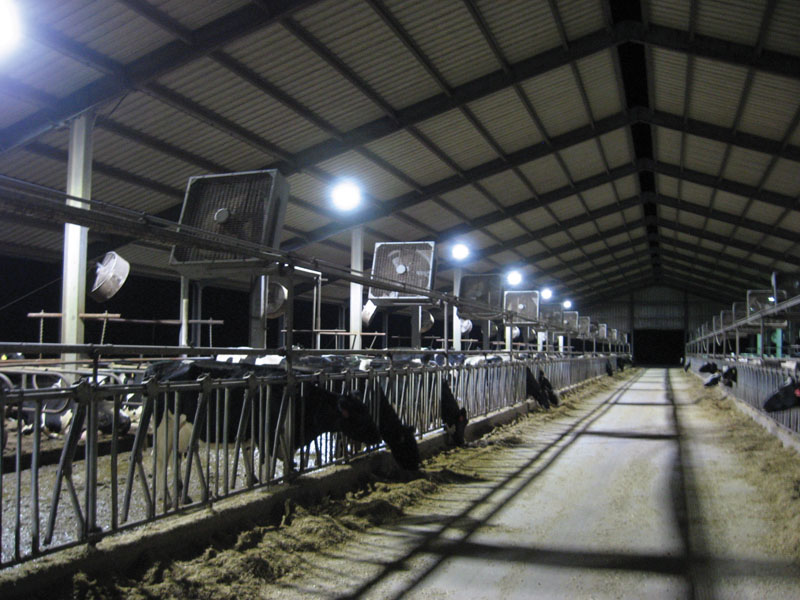 At the beginning of the rural electrification movement during the Great Depression, a Tennessee farmer stood up in church one Sunday and said, “The greatest thing on earth is to have the love of God in your heart, and the next greatest thing is to have electricity in your house.” That was 75 years ago and he was probably talking about having just a few light bulbs, a radio and maybe a refrigerator. My how things have changed.
At the beginning of the rural electrification movement during the Great Depression, a Tennessee farmer stood up in church one Sunday and said, “The greatest thing on earth is to have the love of God in your heart, and the next greatest thing is to have electricity in your house.” That was 75 years ago and he was probably talking about having just a few light bulbs, a radio and maybe a refrigerator. My how things have changed.
The electric grid is the largest interconnected machine on earth – a highway moving electricity from power plants to your home. And while our use of electricity has exploded and changed drastically during the last 75 years, the grid is in need of modernization and its next greatest thing. Some are calling that the smart grid.
But what does that really mean and how will the so-called smart grid affect you and your home? There are three key words that define the improvements that are being made using smart grid technology: affordability, efficiency and reliability. It will provide you with the tools to manage electric use in new ways. It will add self-healing technology to the grid, improving reliability. It will improve efficiency and allow the addition of renewable energy sources, distributed generation and energy storage. It will efficiently integrate new consumer technology such as electric cars and smart appliances.
This new high-tech national power grid isn’t being built from scratch to replace the old one. The existing power generation and distribution infrastructure will continue to be used as long as possible. Instead of replacing the entire infrastructure, power suppliers, like your local electric cooperative, are integrating high-tech computer and communication technology into the existing power grid.
Illinois’ electric cooperatives are out in front and already adding existing smart grid technology, and researching and beta testing new technology. For example, 90 percent of Illinois’ electric cooperatives have installed automated metering infrastructure (AMI) or what some simply call smart meters. Several co-ops are part of a Department of Energy funded smart grid research project. A number of co-ops are testing the integration of renewable energy projects, and all of Illinois’ electric cooperatives have net metering and renewable energy interconnection policies to allow the safe integration of new distributed generation.
The University of Illinois at Urbana-Champaign is also playing a pivotal role in smart grid development. Alfonso Valdes, Managing Director, Smart Grid Technologies, says, “The power grid has some daunting characteristics that complicate that mission. First and foremost, its stability is absolutely critical. The goal is to keep the lights on, so it would be unacceptable to introduce technologies until there’s reason to have tremendous confidence that they’ll work reliably. Also, the grid faces the challenges of being a vast, interconnected patchwork of wildly diverse equipment that was not necessarily designed to work well together.”
Indeed, much of the current infrastructure dates back to a time when power generation and distribution systems were nowhere near as interconnected as they are now. Manufacturers didn’t anticipate that their competing systems would one day need to be compatible with each other. Furthermore, a great deal of the older existing equipment cannot easily be retrofitted with the latest digital technology. Unfortunately, there is no choice but to work with this patchwork, since it would be impossibly expensive to build an entirely new, standardized infrastructure from the ground up.
So why are co-ops introducing smart grid technologies on a large scale? The answers are that the payoff could be immense in terms of grid reliability as well as energy efficiency.
Smart meters
 Smart meters are probably the element of the smart grid you are most familiar with, since almost all Illinois co-ops have installed or are installing them. Smart meters use advanced electronics rather than the old spinning dials to measure electricity use, and they communicate with co-ops over a variety of wired and wireless network technologies.
Smart meters are probably the element of the smart grid you are most familiar with, since almost all Illinois co-ops have installed or are installing them. Smart meters use advanced electronics rather than the old spinning dials to measure electricity use, and they communicate with co-ops over a variety of wired and wireless network technologies.
“I think the biggest change from a member’s perspective is the smart meter, where they don’t have to read the meter anymore,” says Dave Champion, Jr., President/CEO of Eastern Illini Electric Cooperative in Paxton.
However, smart meters have much more to offer than just a monthly meter reading. These new meters are virtually small computers or monitors with some data storage capability. They can monitor voltage at the end of a line making sure it stays with acceptable limits. Smart meters can help monitor blinking light issues that are hard to find, help in outage restorations, and best of all help provide new billing and rate options.
Digital smart meters can collect details on the amount of power being consumed in “real time.” In other words, it’s possible to provide data on exactly how much power a household or business is using at different times across the course of a day.

Champion says, “We can ping the meter to see if the power is out at that location. We can keep data and usage history and send that to the member if they have questions about their bill. Now we are introducing a new application called SmartHub, which is where you can use smart phones and iPads and the member can look at their own history over any period of time they want. They can also report an outage with the touch of a button on their iPhone or their iPad. So that technology is allowing the member to interact with us in this new smart grid age.”
Board members are fully engaged in the change says Champion. For example, the Eastern Illini Electric board members have gone digital replacing the mailing of paper board reports, minutes and reference material with iPads.
The biggest change smart meters will provide is new rates and billing options. For example, Champion says the co-op is providing time of day rates to 100 members now and also offering a new prepaid billing option, all made possible with smart meter technology.
Valdes says, “That information is immensely valuable, because your cooperative’s cost of producing power varies greatly throughout the day. The cost is greatest at times of high demand. For example, during a heat wave, you probably want to run your air conditioner, especially during the daytime.” So does everyone else.
In order to fill the peak demand, co-ops may strain their power production facilities to the limit, sometimes even activating very expensive so-called “peaker” plants to handle periods of extreme demand.
For that reason, co-ops are very interested in encouraging members to shift their demands for power from peak times to off peak times.
That’s where a smart meter’s ability to record power consumption minute-by-minute and communicate with co-ops in real-time comes in. Co-ops will no longer need to charge a single uniform rate per kWh, regardless of whether the members are using expensively produced peak-time power or cheaply produced off-peak-time power. Instead, they can reward members who move their power consumption to off-peak times by offering them lower rates. With smart meters members will have the information they need to time their activities for off-peak lower rate times.
Smart appliances and home energy management systems
 Smart appliances and home energy management systems are two things that you can expect to see more of as smart meters become standard. These smart appliances will help you take advantage of the pricing information available from the smart meters.
Smart appliances and home energy management systems are two things that you can expect to see more of as smart meters become standard. These smart appliances will help you take advantage of the pricing information available from the smart meters.
Valdes says, “Smart appliances will have the ability to choose the times to operate, given the owner’s preferences and the current pricing information from the smart meter. For example, a smart dishwasher could be loaded with dishes and then left alone to monitor current power costs until it observes a favorable price and ‘decides’ to run.”
Today’s thermostats will likely evolve into sophisticated “home energy management” systems, which can easily be configured by the customer to achieve a balance of economy and convenience. Home energy management systems are based on the same idea as smart appliances, but give you a “one stop shop” for monitoring and managing the energy consumption of multiple household devices via one system.
Distributed generation and the smart grid
“Distributed generation” refers to the idea of electricity being generated by many small producers, instead of by a handful of large power plants. For example, ordinary homes and businesses might generate power from solar panels on their roofs, or small wind turbines in their yards.
Today, such technologies are still not common, and rarely generate enough power to satisfy 100 percent of the demand.
Shelby Electric Cooperative, Shelbyville, Ill., is already using its smart meter network to control and operate individual members’ propane fueled standby generators. The members get a lower interruptible electric rate and the co-op can switch the member off the grid during peak demand periods and onto the member’s whole-house generator. It’s all done remotely by using the smart meter network. This saves all the co-op’s members by lowering peak system demand during the most expensive times of the year.
Much research remains to be done if renewable solar and wind distributed generation systems are to become practical. A major problem is that power from such sources is often available only intermittently; for example, solar panels are subject to cloud cover, and wind turbines are useless when the wind isn’t blowing. That intermittent quality presents serious challenges to the stability of the grid. Energy storage could be part of the solution and who knows, maybe electric cars could be integrated into the grid to both consume power off-peak and provide energy storage for the grid on-peak.
Security and privacy concerns
You may have heard someone express concern about the potential health impact of the radio frequency emissions from the meters’ wireless communications. In a 2010 study of one of the more commonly deployed smart meters, the nonprofit Electric Power Research Institute (EPRI) concluded that the exposure levels “fall substantially below the protective limits set by the Federal Communications Commission (FCC) for the general public.”
Even if there was a valid health concern with wireless smart meters, it doesn’t apply to the Illinois cooperative smart meters which all use power-line carrier communications instead of wireless. The power lines are the communications network.
Another concern often raised is privacy. Some people feel very uncomfortable with sharing their detailed energy use patterns with a utility. In part, those concerns can be allayed by cyber security technologies that make it very difficult for unauthorized people to access data or gain control. The debate is ongoing, and doubtless will play a role as policy decisions are made on the appropriate use of smart grid technology.
Smart grid security research at the University of Illinois
 The smart grid is essentially a computer network and it requires the development of new “situational awareness” solutions that can prevent smart grid devices being compromised by hackers and threatening the stability of the grid.
The smart grid is essentially a computer network and it requires the development of new “situational awareness” solutions that can prevent smart grid devices being compromised by hackers and threatening the stability of the grid.
Researchers at the University of Illinois at Urbana-Champaign are developing an advanced detection sensor that can identify security threats in real time. The sensor will monitor traffic among meters and access points to ensure that devices are running securely and that their operations conform to the specified security policy.
According to Valdes, “Conventional antivirus software typically hunts through a computer looking for strings of code that are already known to be associated with malicious intrusions. Since new malicious software is continually being created, that antiviral approach has a big limitation: it cannot recognize so-called ‘zero day’ attacks that use new code not yet known to the antivirus software. A user may frequently update his or her antiviral tool and yet still become a victim.”
For that reason, rather than look for evidence of intrusions as antiviral software does, the Illinois sensor is being designed to detect ways in which smart grid systems are deviating from their complex specifications.
That research is one smart grid effort among many at the University of Illinois, which has several major power grid cyber security initiatives in progress. They include the $18.8 million Trustworthy Cyber Infrastructure for the Power Grid Center (funded by the U.S. Department of Energy with additional support from the U.S. Department of Homeland Security) and the Illinois Center for a Smarter Grid (funded by the Illinois Department of Commerce and Economic Opportunity), among others. The smart grid security experts at the University of Illinois are also helping Illinois electric co-ops with cyber security audits and providing conferences for utility experts to share ideas on improving grid security.
The smart grid changes are about providing better service to members. Champion says, “The mere fact that we serve members not customers is important to remember. Members are the owners of the organization. We have accountability to those members as board members and staff. It keeps our feet to the fire so that they have better service and we remain relevant in this rapidly changing world. Our density is still the same at about three meters per mile of line. That challenge was there in the beginning and it will be there in the future too. Despite providing new ways to communicate with members through smart meters or whatever else comes, we still have to be that organization where you can call and talk to the president of the organization and get answers to hard questions.”








